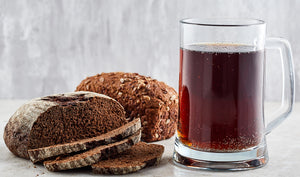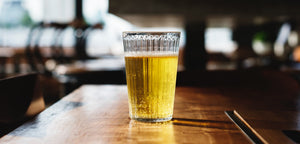You've slaved over a new batch of beer, then just when you're ready to finish everything up you get a whiff or taste of something bad.
It happens to all of us, and it generally means all your hard work is going to be poured down the drain. Or does it?
Some weird odours and tastes are a natural part of the fermenting process. Here's a guide of common off smells and tastes, how to identify them, and most importantly, how to avoid them.
Diacetyl (2,3-butanedione)
What is it? A small organic compound from the ketones chemical group.
What does it taste like? Butter, Butterscotch.
When is it acceptable? In some English & Eurpoean style beers.
How to avoid it
- Limit air intake during racking, filtration & packaging. Exposure to oxygen causes the alpha-acetolactate in your beer to convert to diacetyl.
- Choose a yeast not prone to diacetyl development.
- Make sure brewing equipment is clean.
- Do a “diacetyl rest”.
Isoamyl Acetate
What is it? Natural occurring by-product of the fermenting process.
What does it smell like? Banana, Pear.
When is it acceptable? Some level of this ester flavour is present in all beers.
How to avoid it:
If your beer is producing more ester flavour than you’d like, try the following:
- Lower your fermentation temperature.
- Try a cleaner yeast strain.
- Pitch enough yeast to avoid yeast stress.
- Bottle condition & cellar beer.
Ferrous Sulphate
What is it? Caused by the presence of metal-ions in brewing water
What does it smell like? Metal, Copper. Ink, Blood.
When is it acceptable? Never. Throw it out.
How to avoid it:
- Make sure the water you're using does not have high levels of iron.
- Keep raw materials away from metal equipment or supplies.
Dimethyl Sulfide (DMS)
What is it? A byproduct of mashing and fermentation. All malts carry the chemical S-Methyl Methionine (SMM) which causes DMS to develop
What does it smell like? Corn, Creamed Corn, Cabbage
When is it acceptable? All beers have a small amount of DMS because of the mashing and fermentation processes and is most acceptable in some lagers. DMS will dissipate the as your lager ages.
How to avoid it:
- Make sure you have a vigorous boil in your kettle.
- Use a 2-Row malt over a 6-Row malt to minimize SMM.
Isovaleric Acid
What is it? Natural fatty acid found in plants, essential oils, cheese and old hops.
What does it smell like? Cheese, Sweaty Sock.
When is it acceptable? Beer brewed with Brettanomyces (wild yeast), although it should not be an overpowering scent.
How to avoid it:
- Use fresh hops.
- Limit oxygen exposure to hops.
Hydrogen Sulphide (H2S)
What is it? Hydrogen sulphite naturally occurs during the fermentation process.
What does it smell like? Rotten Eggs, Burnt Matches.
When is it acceptable? Some lager yeasts can produce hydrogen sulphide and produce a “fresh” taste. Avoid it in high concentrations.
How to avoid it:
- Use a different yeast strain.
- Give your beer more time to mature.
- Consider using a yeast nutrient.



